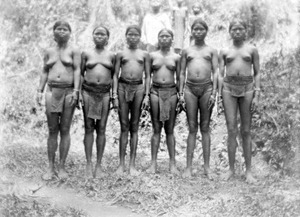This article needs additional citations for verification .(June 2015) |
 | |
| Total population | |
|---|---|
| 7,500 | |
| Regions with significant populations | |
| Languages | |
| Wemale language (weo); Classification: Malayo-Polynesian, Indonesian language | |
| Religion | |
| Christianity [ citation needed ], Animism | |
| Related ethnic groups | |
| Alune people |
The Wemale people are an ethnic group of Seram Island, Indonesia. They number over 7,500 [1] and live in 39 villages of the central area of the island. Like the Alune people in the west, the Wemale people originate from a common ancestral group called the Patasiwa. [2]
Contents
The Wemale language is of Malayo-Polynesian origin and it is divided into a northern and a southern variety, having dialects known as Horale, Kasieh, Uwenpantai, Honitetu and Kawe. [1] [3] Northern Wemale is spoken by about 5,000 people and the Southern Wemale is spoken by about 3,700 people. [4] The Hainuwele legend is an origin myth from the Wemale and Alune folklore. [5] It was recorded by German ethnologist Adolf Ellegard Jensen in a 1937–1938 expedition to the Maluku Islands. [6]
